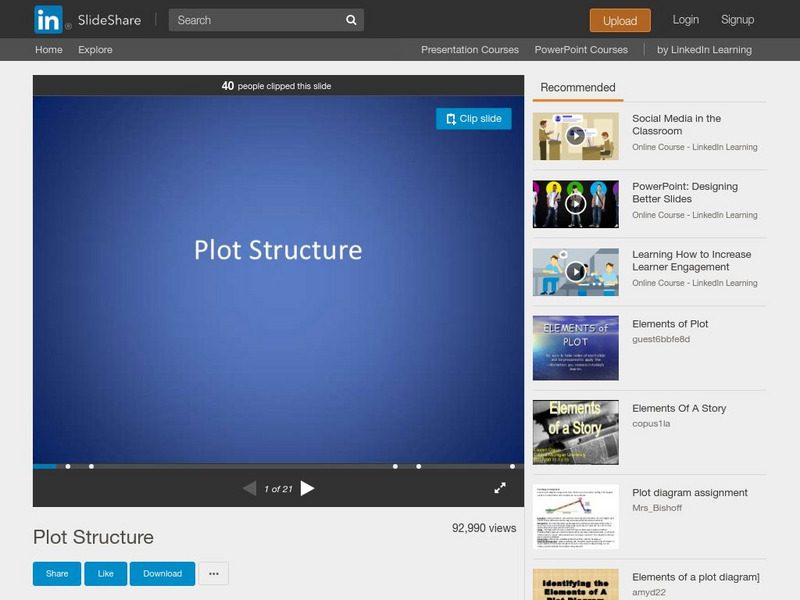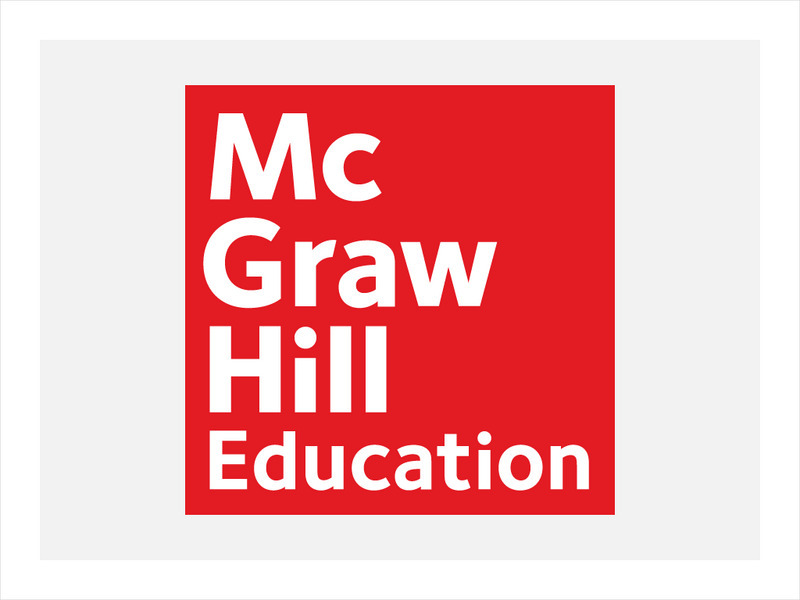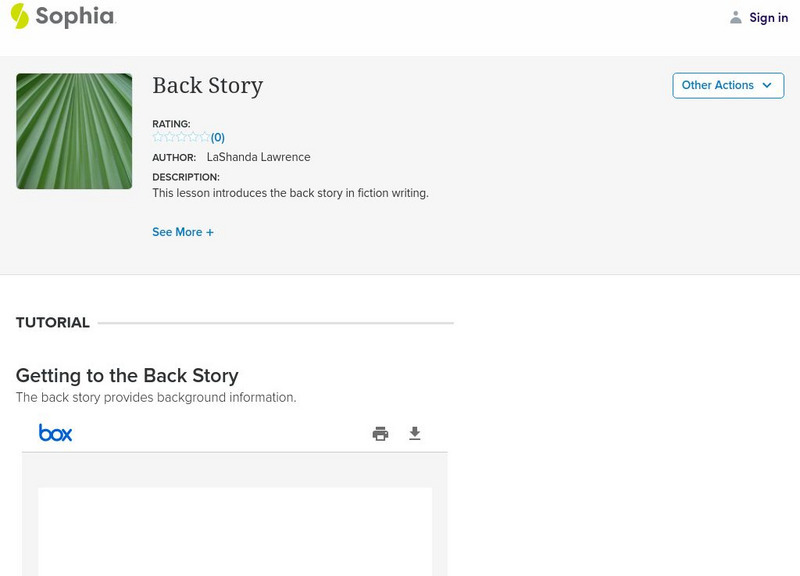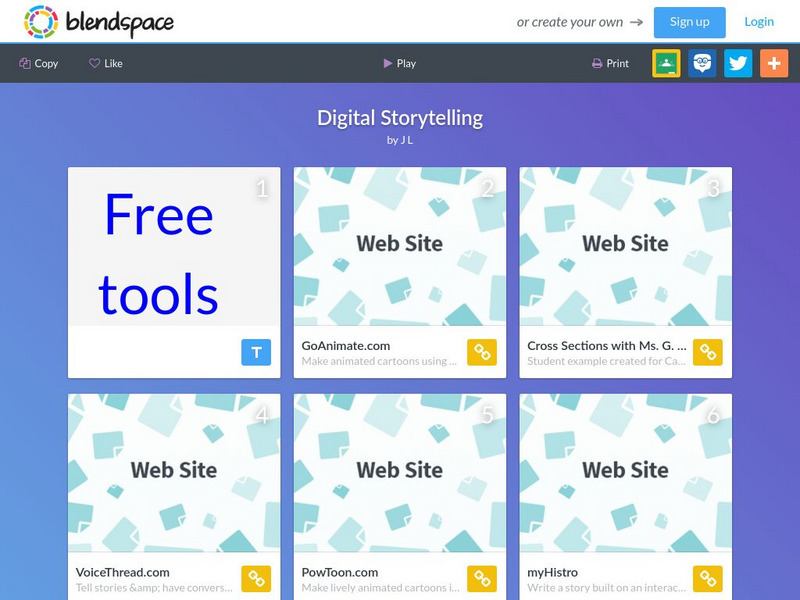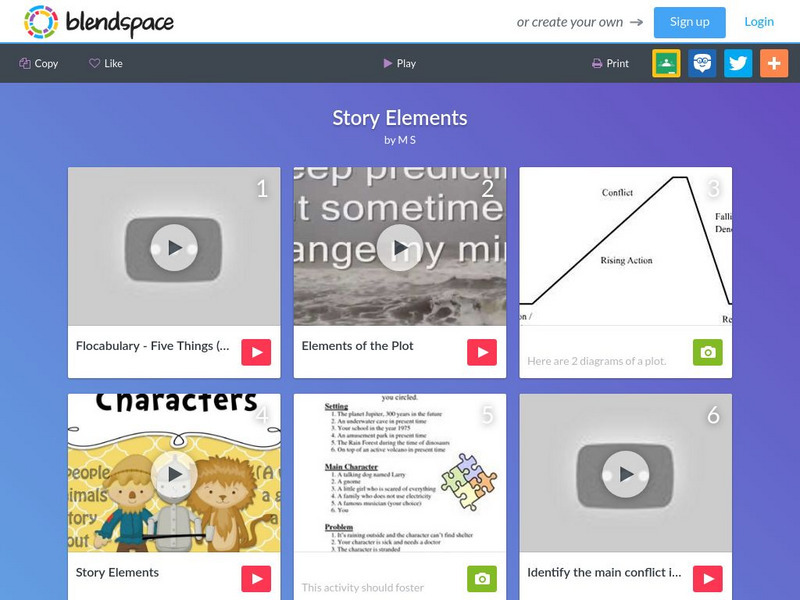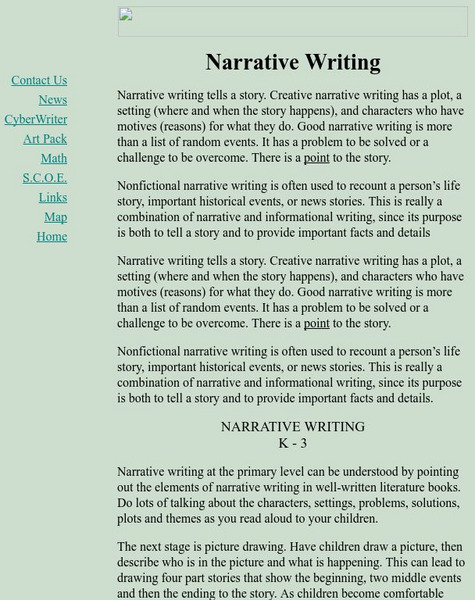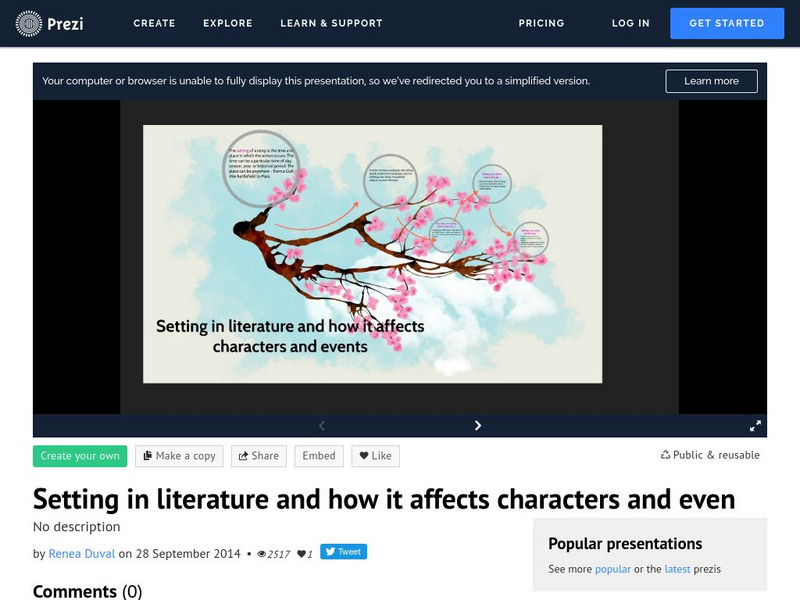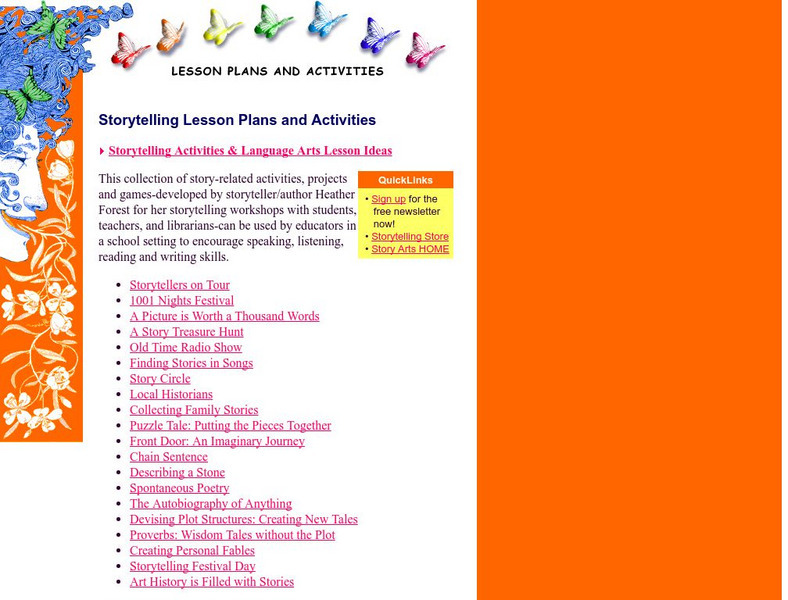Tom Richey
Slide Share: Plot Structure
A slide show with twenty-one slides explaining elements of plot including: characters, setting, exposition, conflict, rising action, climax, falling action and resolution.
Quia
Quia: Story Elements
This interactive game of "Rags to Riches" assesses students' knowledge of story elements. Students will identify the definitions of the story elements and the applications of story elements in stories.
McGraw Hill
Glencoe Online Writer's Choice: Punctuating Dialogue
This tutorial focuses on punctuating dialogue including how to use quotation marks and commas correctly. The explanation and examples are followed by a self-grading practice exercise.
Sophia Learning
Sophia: Back Story
This lesson introduces the back story in fiction writing. W.11-12.3c Narrative Org
Sophia Learning
Sophia: Characters and Setting
This lesson introduces the connection between characters and setting in fiction writing.
TES Global
Blendspace: Digital Storytelling
Links to eight different online storytelling websites available for free student use followed by an assessment.
TES Global
Blendspace: Story Elements
A twelve-part learning module with links to videos, images, and websites to use while learning about story elements and the development of a plot.
ClassFlow
Class Flow: Digital Storytelling With Class Flow Technology
[Free Registration/Login Required] Digital storytelling is the combination of the ancient art of oral storytelling with today's technology, enabling students to write their own uniquely personal tales and then personalize them even more...
Can Teach
Can Teach: Tabloid Science Fiction
For this lesson plan students will write science fiction stories based on stories brought up in the tabloids. Lesson plan indicated for 5th grade and above.
Sophia Learning
Sophia: Characters and Plot
This lesson introduces the connection between characters and plot in fiction writing.
Other
Cyberwriter: Narrative Writing
Cyberwriter gives narrative writing activities leveled for K-3rd grades and 4th-8th grades. A brief explanation about narrative writing is also on this page. CCSS.ELA-Literacy.CCRA.W.3
Other
Prezi: Setting in Literature and How It Affects Characters and Events
A slideshow describing the elements of plot as well as the importance of dialogue as it interacts with different plot elements.
Caro Clarke
Caro Clarke: Writing Advice: Beginner's Four Faults
This site is a personal site from Caro Clarke. The third installment in this series looks at the four major mistakes made by beginning authors. The main idea of this article is that the author needs to be able to combine dialogue with...
Other
Story Arts:storytelling Activities & Lesson Ideas
Use this site to get students interested in and enthusiastic about storytelling with these cool lesson ideas. Look through these short descriptions of lesson ideas to help develop a lesson to fit your classroom needs.
TES Global
Blendspace: What Makes Stories Scary?
A learning module that includes fourteen links to websites, videos, and activities on writing scary stories. Lessons focus on vocabulary, plot and character development, elements of gothic stories, tone and mood, suspense, and more.
Quizlet
Quizlet: Flash Cards: Vocabulary 1: Nonfiction
These interactive flashcards focuses on terms relating to nonfiction. These terms include the following: nonfiction, fiction, glossary, index, table of contents, headings, subheadings, caption, boldface, italicized, preface, sidebar, and...
Quizlet
Quizlet: Plot Terms: 7th Grade Level Match
Race against the clock to match each story element with its definition. Terms include: plot, introduction, conflict, rising action, climax, falling action, conclusion/resolution, sub-plot, parallel episode, flashback, and foreshadowing.
Quizlet
Quizlet: Plot Terms: 7th Grade Level Flashcards
Eleven flashcards on the elements of a story including: plot, introduction, conflict, rising action, climax, falling action, conclusion/resolution, sub-plot, parallel episode, flashback, and foreshadowing.
PBS
Pbs Learning Media: Building Video Literacy: Storyboarding
In this activity developed by EDC's Center for Children and Technology, students explore the relationship between types of shots and storytelling.
Scholastic
Scholastic: Nonfiction Writing Lessons
This series of nonfiction writing lessons was developed by Stuart Miller. Four activities include: Describing the Real World, The Interview, Writing a Profile, and Writing a Review.
SMART Technologies
Smart: Leads in Narrative Writing
This lesson explains the purpose of a lead and introduces students to 6 different types of leads they can use in their writing.
Annenberg Foundation
Annenberg Learner: Literature: Creating Character
This article provides good insight into the creation of a character.


